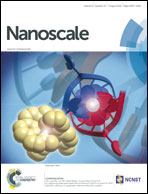A paradigm shift in the excitation wavelength of upconversion nanoparticles
Abstract
The past two decades witnessed the emergence of upconversion nanoparticles as promising luminophores finding multifarious uses from biological studies to solar cells. Progress in their practical use, however, has been hampered by requirements to be excited within a narrow absorption band at around 980 nm. Since the main constituent of biological tissue – water – absorbs strongly in this region, significant reduction in the penetration depth is anticipated as the 980 nm light gets attenuated travelling through tissues, besides also risking tissue damage from the overheating effect. Just recently, remarkable efforts to engineer the excitation of upconversion nanoparticles to a more suitable wavelength for biological applications were reported. This article gives an insightful view on the different ingenious designs that have been reported and their progression towards the development of upconversion nanoparticles with biologically friendlier excitation wavelength.


 Please wait while we load your content...
Please wait while we load your content...